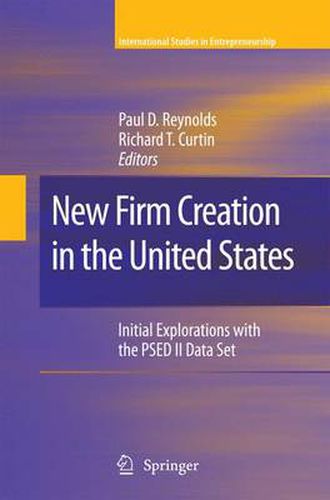Readings Newsletter
Become a Readings Member to make your shopping experience even easier.
Sign in or sign up for free!
You’re not far away from qualifying for FREE standard shipping within Australia
You’ve qualified for FREE standard shipping within Australia
The cart is loading…






This title is printed to order. This book may have been self-published. If so, we cannot guarantee the quality of the content. In the main most books will have gone through the editing process however some may not. We therefore suggest that you be aware of this before ordering this book. If in doubt check either the author or publisher’s details as we are unable to accept any returns unless they are faulty. Please contact us if you have any questions.
This research program began in 1993. The idea of developing representative samples of those active in the business creation process, now called nascent entrepreneurs, developed from the success of using regional characteristics to 1 predict variations in new firm birth rates in six countries. The initial purpose was to determine those external factors that encouraged individuals to initiate the business creation process and become, as they are now called, nascent entrepreneurs. The research procedures, mainly the critical aspects of the scre- ing procedures, were developed with the Survey Research Laboratory at the University of Wisconsin in Madison to complete the Wisconsin Entrepreneurial 2 Climate Study. Support for an initial test with a national sample was provided by the Institute for Social Research at the University of Michigan. Richard Curtin became involved with the incorporation of the screening module as part 3 of the Survey of Consumers in October and November in 1993. The success of these efforts in providing a detailed description of the ent- preneurial process based on representative samples led to substantial interest among entrepreneurial scholars. A founding team of Nancy Carter, William Gartner, and Paul Reynolds was able to organize the Entrepreneurial Research Consortium (ERC), a collaborative network of 34 research units that shared the financial cost and sweat equity required to implement the first national project, 4 PSED I.
$9.00 standard shipping within Australia
FREE standard shipping within Australia for orders over $100.00
Express & International shipping calculated at checkout
Stock availability can be subject to change without notice. We recommend calling the shop or contacting our online team to check availability of low stock items. Please see our Shopping Online page for more details.
This title is printed to order. This book may have been self-published. If so, we cannot guarantee the quality of the content. In the main most books will have gone through the editing process however some may not. We therefore suggest that you be aware of this before ordering this book. If in doubt check either the author or publisher’s details as we are unable to accept any returns unless they are faulty. Please contact us if you have any questions.
This research program began in 1993. The idea of developing representative samples of those active in the business creation process, now called nascent entrepreneurs, developed from the success of using regional characteristics to 1 predict variations in new firm birth rates in six countries. The initial purpose was to determine those external factors that encouraged individuals to initiate the business creation process and become, as they are now called, nascent entrepreneurs. The research procedures, mainly the critical aspects of the scre- ing procedures, were developed with the Survey Research Laboratory at the University of Wisconsin in Madison to complete the Wisconsin Entrepreneurial 2 Climate Study. Support for an initial test with a national sample was provided by the Institute for Social Research at the University of Michigan. Richard Curtin became involved with the incorporation of the screening module as part 3 of the Survey of Consumers in October and November in 1993. The success of these efforts in providing a detailed description of the ent- preneurial process based on representative samples led to substantial interest among entrepreneurial scholars. A founding team of Nancy Carter, William Gartner, and Paul Reynolds was able to organize the Entrepreneurial Research Consortium (ERC), a collaborative network of 34 research units that shared the financial cost and sweat equity required to implement the first national project, 4 PSED I.